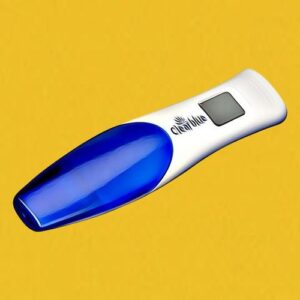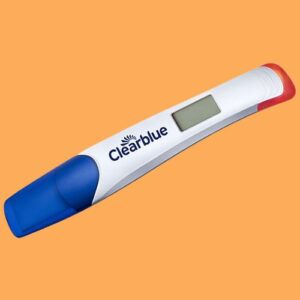You can have as much sex as you want but unless you do it at the right time of the month, you cannot conceive. The timing of your sexual activity should be in accordance with your ovulation period, so that fertilisation occurs. Before we move on to the signals that indicate the date of ovulation, let us first understand how knowing ovulation date helps in conception.
Ovulation is the process by which the mature egg is expelled from the ruptured follicle into the uterine cavity via the uterine tube where it can remain unfertilised for 24 hours. Sperms can stay viable in the uterine cavity for a maximum of three days. Hence, if you involve in sexual activity two days prior to ovulation, then it increases your chances of conceiving.
Remember, the key to conception is having sex during this small window around ovulation, when the ripened egg is released and sperm is viable in the uterine cavity. Therefore, it is essential to pinpoint the most fertile days by determining the date of ovulation and keeping track of the signs of ovulation.
Some of these signals tell you when you are about to ovulate; whereas some indicate the time when have already ovulated. Here are a few signs of ovulation that could mean you are primed for babymaking.
Signs of Ovulation – The Countdown
If your cycle is regular, this is the easiest way to determine your ovulation date. If your cycle is very regular, you may be able to determine when you ovulate by doing some simple maths. Ovulation occurs 14 days prior to the day your menses arrive. Or, if your cycle is of 28 or 30 days, just subtract 14 days from the cycle to find out the window when you are likely to ovulate. This helps you plan your sexual activity during those most fertile days of the month.
However, this countdown method won’t work for women who do not have regular menstrual cycles.
Track and Chart Your Body’s Signals
Our body gives several signals to indicate the time of ovulation; you just need to track these body patterns and identify them. This natural method is easy, effort and free of cost. These signs of ovulation are simple to monitor.
Change in Body Temperature
One of the best ways to predict that ovulation has occurred is to track your basal body temperature (basal body temperature is your body’s temperature when it is at rest). Your body temperature increases when your ovulation is occurred. It stays slightly raised just afterwards. This thermal shift is due to increase in progesterone levels duration of ovulation.
This method needs practice. You will have to take your temperature every day before you get out of the bed and start doing your daily chores as it will raise the temperature. There is a slight increase in BBT, typically between 0.5 to 1.6 degrees. Rise in temperature will pinpoint the time in the month when you tend to ovulate and you can plan your sexual activity accordingly if you are planning to conceive.
Change in Cervical Mucus
Vaginal discharge changes substantially during your monthly cycle. When you are not ovulation, cervical mucosal discharge may not be very much and you may feel dry. If it appears, it has a thicker consistency. You can check your cervix daily by using one or two fingers and then making a chart. However, as you approach ovulation, the cervical discharge becomes clearer, watery and stringy in texture (like raw egg white). This consistency makes it easier for sperm to swim through the cervical mucus.
When you combine this track with a basal body temperature chart, it can be useful to figure out the signs of ovulation.
Change in Cervical Position
Once you approach the ovulation process, the position of cervix changes slightly. It becomes softer and more open. This makes it easier for sperms to swim through the cervix to meet the egg. To check its position, put a clean finger in to your vagina in an upward direction. If ovulation is not near, then you will be able to feel your cervix. Whereas, on the other hand, if you are near to your ovulation date, then cervix will be positioned at a higher level and difficult to reach.
Look Out for Body Symptoms
Mittelschmerz. Another indication that you may be ovulating is your mid-cycle pain. Some women may experience right or left sided pelvic pain that lasts for one or two days. This pain occurs when the egg is released from the follicle. It is due to the stretching of the nerve fibres when the ovum is released from the follicle in the ovary. Some women may also experience spotting in the mid of the cycle during the ovulation period. This entire phase is known as ‘mittelschmerz‘.
The Importance of Timing
When trying to conceive, timing is everything. Even if you have sex frequently throughout your cycle, if you miss the crucial ovulation window, you may not get pregnant. That’s why it’s so important to pay attention to your body’s ovulation signs and plan your sexual activity accordingly. Aim to have sex in the two or three days leading up to ovulation, as well as on the day of ovulation itself. This will give you the best chances of conception.
Tenderness of Breasts
During ovulation, the level of female hormones increases in the body, which in turn lead to tenderness in breasts.
Bloating
During ovulation, bloating can be a common and uncomfortable symptom for many women. It is a normal change in hormones during the menstrual cycle that can cause bloating and other symptoms. If you’re feeling bloated around the time of your ovulation, you’re not alone.
Bloating is caused by a rapid increase in hormones that cause the body to produce more progesterone and oestrogen. These hormones affect the way the body stores water, leading to excess fluid in the body and a feeling of bloating. This can be particularly noticeable when the uterus expands during ovulation, pushing against the surrounding organs.
Ways to reduce bloating include avoiding foods that can cause gas and bloating, such as beans, cabbage, and onions. Drinking plenty of water, avoiding salty foods, and getting regular exercise can also help.
Ovulation bloating can be an uncomfortable symptom, but understanding the cause and taking steps to reduce it can help. Remember that these symptoms are normal and typically go away on their own after ovulation is complete. If you’re concerned or your symptoms are persistent, speak to your doctor for further advice.
Feeling Frisky
The increase in luteinising hormone during ovulation causes increase in libido (sex drive). So, if you feel bit frisky couple of days before ovulation, go for it.
More Energetic
Other signs of ovulation – many women experience high energy levels and increase in sensitivity to senses before ovulation. Some also experience mood swings due to changes in hormonal levels.
Ovulation Predictor Kits
Ovulation predictor kits work in similar as home pregnancy tests. Just as in home pregnancy test, you pee on the stick and find out the presence of luteinising hormone in the urine. There is surge in luteinising hormone levels in the body just before ovulation period. Urine dip stick testing should begin two days prior to the day of ovulation.
Although ovulation predictor kits are the most accurate way to find out your ovulation date, this method is quite expensive.
Ovulation Tracking Apps
In addition to ovulation predictor kits, there are now many apps available that can help you track your ovulation. These apps allow you to input data about your menstrual cycle, basal body temperature, and cervical mucus changes. Over time, the app learns your unique cycle patterns and can predict your most fertile days. Some popular ovulation tracking apps include Clue, Flo, and Ovia. While these apps can be very helpful, it’s important to remember that they are not always 100% accurate. It’s best to use them in conjunction with other ovulation tracking methods for the most precise results.
Knowing when you ovulate can also help in preventing pregnancy. By refraining from sexual intercourse around the time of ovulation, you can reduce your chances of getting pregnant.
At zoombaby.co.uk, we offer the UK’s widest selection of fertility and preconception products – including our flagship pregnancy and ovulation tests. Our products allow you to quickly pick up the signs of ovulation.
All orders are posted out on the day we receive them, packaged discreetly to maintain your privacy. Give us a try when you are trying to conceive!
Photo by Ignacio Campo on Unsplash
Zoom Baby is a leading supplier of Pregnancy Tests and Ovulation Test Kits





